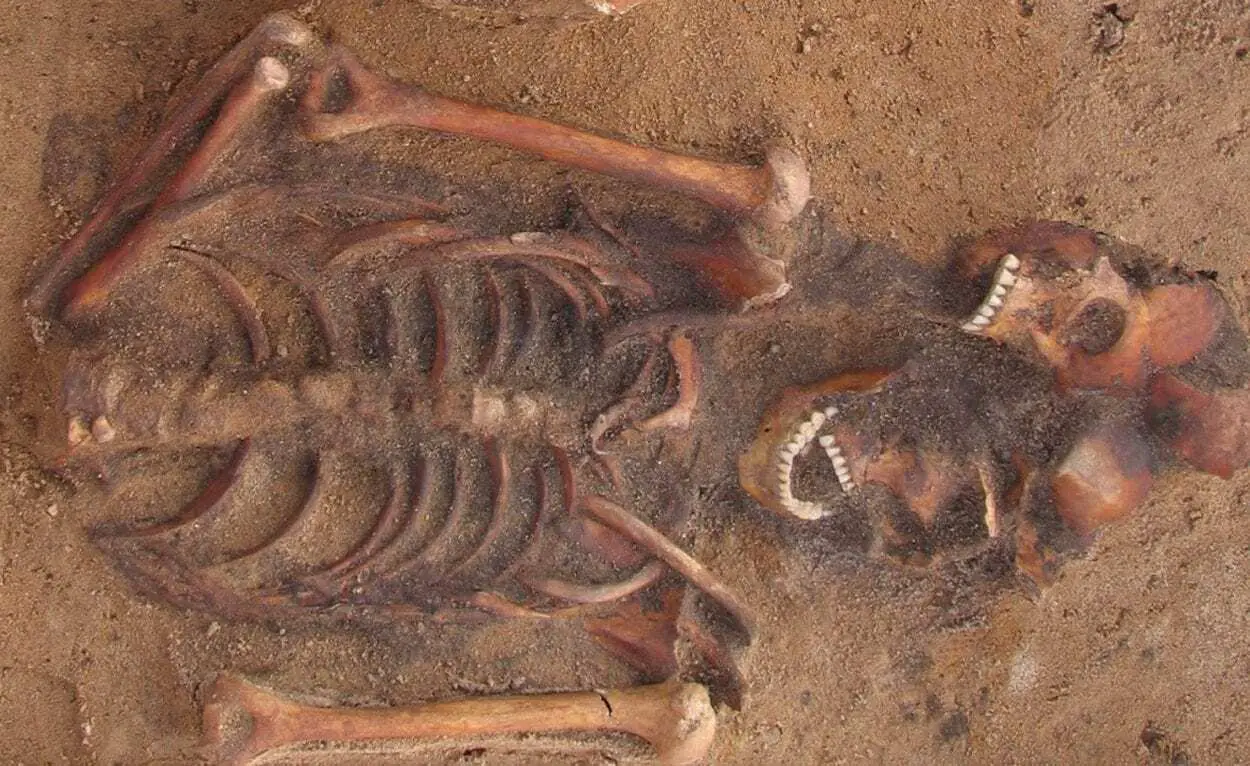A DNA study on victims of the plague in mass graves in Lithuania has found a woman inflicted with Frambesia tropica, otherwise known as Yaws disease in addition to having the plague.
Yaws disease is an infection of the skin, bones and joints caused by the spirochete bacterium Treponema pallidum pertenue, closely related to syphilis. Symptoms begin with a swelling on the skin that often breaks open to form an ulcer. Weeks later the joints and bones become painful and often misshapen, whilst new skin lesions may appear.
The woman was found in a 15th-century mass grave during building works in Vilnius, Lithuania, containing victims of the plague that was ravaging medieval Europe at the time.
Several such graves have been well documented by historical sources, but their exact position and the people buried in them have often been forgotten over time
Rimantas Jankauskas, professor of medicine at Vilnius University said: “There is no historical information about this grave, but the type of burial, in addition to the location outside the medieval city limits of Vilnius, indicated the plague or a similarly serious infectious disease, in order to gain clarity, we needed confirmation using DNA analysis.”
Researchers were able to identify the plague pathogen by analysing the teeth of several individuals. They also applied newly developed technologies for molecular recognition of pathogens that revealed one victim had a weak signal for a pathogen that appears to be related to syphilis.
“It was impressive to find the traces of such a disease in a historical skeleton because its molecular maintenance in historical bones is considered problematic,” said Kirsten Bos, group leader for molecular paleopathology at the Max Planck Institute for Human History (MPI-SHH) in Jena.
Diseases from the syphilis family, also known as treponematoses, probably goes back a long way in human history, although their spread in Europe involves a number of questions. According to the prevailing opinion, the first outbreak of syphilis in Europe coincides with the siege of Naples by Charles VIII in 1495.
There it broke out among its soldiers and quickly spread across Europe. Since this outbreak only occurred shortly after Columbus and his team returned from their first transatlantic journey, it is widely assumed that syphilis has its roots in the New World. But there is also growing support for another theory. An increasing number of scientists believe that they have identified a pathogen,
“We were able to reconstruct an astonishingly well-preserved genome, which, to our surprise, fell within the genetic diversity of today’s Frambesia,” said Karen Giffin, a PhD student at the Max Planck Institute for Human History (MPI-SHH).
Frambesia is one of the lesser-known diseases among the treponematoses and is mainly found on the skin of humans and other primates in warm, tropical environments. “Finding it in Northern Europe, in a 15th-century mass grave, was unexpected,” added Giffin.
Frambesia is apparently younger than previously thought
Since both humans and non-human primates are infected with Frambesia, it was previously assumed that this was a particularly old disease; older than the spread of humans across the globe during the Pleistocene.
“To our surprise, the reconstructed Frambesia genome was only a few genetic steps away from the ancestor of all variations of the Frambesia, which are known today among humans and non-human primates,” said Bos. “From the age of our medieval skeletons, we conclude that the diversity of the Frambesia as we know it today came about 1,000 years ago.”
Header Image Credit : Robertas Žukovskis







